Latest posts by (see all)
- The Best Things to Do in Tulsa - June 26, 2020
- The Most Interesting Things to Do in Springfield Mo - June 15, 2020
- Best Things to Do in Salt Lake City - May 26, 2020
- 10 Best Websites for Playing Online Games - May 22, 2020
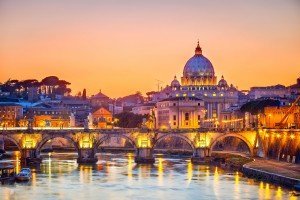 If you plan your journey, you may be puzzled which places to visit in Italy. There is nothing surprising as this country has more than half of Europe’s cultural heritage. Each city is a unique place that has a lot of cultural monuments. In addition to the cultural attractions the country has beautiful landscapes, natural monuments and national parks. Nature and cultural heritage of the country is very rich. Among Italian landscapes you can find beautiful meadows full of olive groves, stunningly beautiful mountain peaks of the Alps, beautiful beaches, islands and crystal pure lakes.
If you plan your journey, you may be puzzled which places to visit in Italy. There is nothing surprising as this country has more than half of Europe’s cultural heritage. Each city is a unique place that has a lot of cultural monuments. In addition to the cultural attractions the country has beautiful landscapes, natural monuments and national parks. Nature and cultural heritage of the country is very rich. Among Italian landscapes you can find beautiful meadows full of olive groves, stunningly beautiful mountain peaks of the Alps, beautiful beaches, islands and crystal pure lakes.
Contents
- Place to visit number 1: Villa Medici, Rome
- Place to visit number 2: Apostolic Library in the Vatican, Rome
- Place to visit number 3: Parco Nazionale d’Abruzzo, Rome
- Place to visit number 4: Bridge of Sighs, Venice
- Place to visit number 5: Football Museum in Coverciano, Florence
- Place to visit number 6: Boboli Gardens, Florence
- Place to visit number 7: Quadrilatero D’Oro, Milan
- Place to visit number 8: Palazzo di Capodimonte, Naples
- Place to visit number 9: Opera San Carlo Theater, Naples
- Place to visit number 10: Leaning Tower of Pisa, Pisa
- Video
Place to visit number 1: Villa Medici, Rome
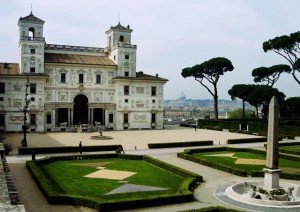 The monument of the Renaissance – the legendary Villa Medici, which stands on one of the highest hills of Rome Pincio close to the famous Piazza di Spagna and the Villa Borghese Gardens. This exquisite creation of the 16th century of the master Annibale Lippi, executed in the fashionable in those days, style of mannerism, steeped in the spirit of the Eternal City beckons travelers to reveal its secrets. Fragments of the ancient history of Rome in the form of bas-reliefs and fragments of statues can be found at every step showing the rich history of this architectural monument.
The monument of the Renaissance – the legendary Villa Medici, which stands on one of the highest hills of Rome Pincio close to the famous Piazza di Spagna and the Villa Borghese Gardens. This exquisite creation of the 16th century of the master Annibale Lippi, executed in the fashionable in those days, style of mannerism, steeped in the spirit of the Eternal City beckons travelers to reveal its secrets. Fragments of the ancient history of Rome in the form of bas-reliefs and fragments of statues can be found at every step showing the rich history of this architectural monument.
You will definitely be impressed by:
- High stern facade decorated with antique bas-reliefs found during construction.
- Huge halls of the palace painted with murals by the master of the 16th century by Jacopo Zucchi.
- Grotesque lobby decorations depicting scenes from Aesop’s fables and the seasons.
- Spiral staircase, the play of light and shadow, worthy of special attention.
- There is a collection of famous sculptures, such as Pallas Athena and David. From the hall with stone lions you have views of the fountain and Egyptian obelisk.
Gardens of the Villa Medici have been very well preserved and divided into 16 squares with the isolated hedges. Statues and busts are arranged along the myrtle and boxwood lanes, special attention deserves the sculptural group on the balustrade near the Fountain of Mercury. The figures symbolize the horror of the death of Pompeii. The pieces of lava, used in the composition, enhance its realism. In the depths of the park you will see the statue of the goddess Roma.
Interesting: From the observation deck, located at the top of the statue, you can enjoy views of the city.
Place to visit number 2: Apostolic Library in the Vatican, Rome
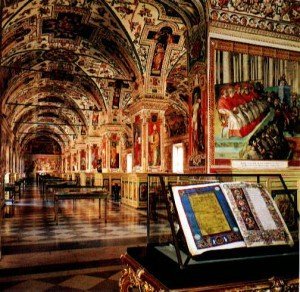 Library in Vatican is a repository of manuscripts, books of the Middle Ages and the Renaissance. The library was founded in the 15th century and its fund is replenished up to the present day. It contains:
Library in Vatican is a repository of manuscripts, books of the Middle Ages and the Renaissance. The library was founded in the 15th century and its fund is replenished up to the present day. It contains:
- about 1.6 million printed books,
- 150 thousand manuscripts,
- 100 thousand prints and cards,
- 300 thousand of coins and medals.
In addition to the rich fund, the Vatican Library has a great design. And it is really great that it is open to the public (but only a small part is open to tourists). Here it is worth adding that the library is available for researchers, university professors, students working on dissertations. Every day, the library is visited by about 150 scientists.
According to the legend, the main repository of knowledge of the Catholic Church has secret rooms, about which only the initiated people know. In these secret rooms there are priceless manuscripts that can shed light on the most mysterious secrets of the universe.
Among the 13 halls of the library the Museum of the Etruscan and Roman Antiquities is of the particular interest as well as the hall where there are wonderful frescoes.
Interesting: One of the main treasures of the library collection is the Bible, published in 1476 by the Duke of Urbino.
Place to visit number 3: Parco Nazionale d’Abruzzo, Rome
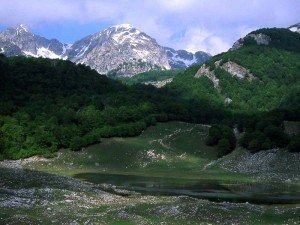 Imagine a wild region of mountains, alpine meadows, pine needles eternal, perennial oaks and elms where among all idyllic landscapes deer are roaming, chamois are jumping on the slopes, and in thickets wolves and bears are lurking. And if there are real live elves and dwarves, they too would have chosen his home is the wild corner in the heart of Italy. It is, of course, about the national park with the sonorous name ” Parco Nazionale d’Abruzzo “, created in 1922 by a famous politician and part-time environmentalist Erminio Siparov.
Imagine a wild region of mountains, alpine meadows, pine needles eternal, perennial oaks and elms where among all idyllic landscapes deer are roaming, chamois are jumping on the slopes, and in thickets wolves and bears are lurking. And if there are real live elves and dwarves, they too would have chosen his home is the wild corner in the heart of Italy. It is, of course, about the national park with the sonorous name ” Parco Nazionale d’Abruzzo “, created in 1922 by a famous politician and part-time environmentalist Erminio Siparov.
In the park you can admire infinitely fast mountain rivers and picturesque lakes, surrounded by evergreen coniferous forests. The flora of the place is very beautiful and diverse. Of course, the queen of the land is a pine, the most common variations of the black mountain and pine trees. Surprisingly, in the “green heart” of Italy you can also find a birch different from Russian species.
Incredibly rich the wildlife and nature reserve is here. You will find a unique Apennine bear and the wolves. Other major inhabitants are:
- lynx,
- wild boar,
- rabbit,
- foxes.
Tourists can use an opportunity to ride in canoes, boats or catamarans on the lakes of Parco Nazionale d’Abruzzo.
Interesting: Fishing and skiing are widespread here in certain periods (the exact hunting season should be specified in the reserve headquarters).
Place to visit number 4: Bridge of Sighs, Venice
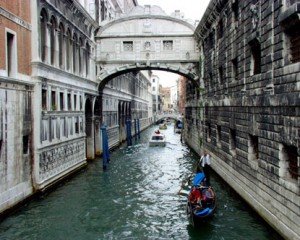 Bridge of Sighs is the romantic name of one of the oldest bridges in Venice. It was built in 1602 by the architect Antonio Contin. Of course, a beautiful name of this place attracts many tourists. However, the Bridge of Sighs was originally not connected with the theme of love.
Bridge of Sighs is the romantic name of one of the oldest bridges in Venice. It was built in 1602 by the architect Antonio Contin. Of course, a beautiful name of this place attracts many tourists. However, the Bridge of Sighs was originally not connected with the theme of love.
Bridge of Sighs is a channel on the Palace building that connects the Doge’s Palace with the building of the prison. On this bridge prisoners were carried in the Middle Ages. They were those who sighed when saw the beauty of Venice for the last time.
The famous Casanova also once walked the Bridge of Sighs. But he was the only person who was able to escape from the prison. In order not to confuse tourists with the sad stories, the Italians only recently invented a new legend associated with the Bridge of Sighs. During sunset, floating in a gondola under the bridge, you need to kiss your lover and then your feelings will be mutual and eternal.
Bridge of Sighs is in the Baroque-style carved with white marble. Today, this landmark is considered one of the most popular in Venice.
Many creative people have been very impressed with the walk on the Bridge of Sighs:
- Vrubel in 1894 wrote the eponymous painting after his trip to Italy.
- Poe mentioned attraction in the novel “Rendezvous”.
Interesting: Keep in mind that there are a lot of people who want to have eternal love, so you will have to stand in a queue with other lovers on gondolas.
Place to visit number 5: Football Museum in Coverciano, Florence
 The main “male” landmark of Florence- Football Museum is located in the modern area of Florence Coverciano. Despite the fact that it has been opened not so long time ago – in 2011, the museum can boast with a remarkable number of visitors. People come here to admire the trophies of Italian football teams, learn more about the life and achievements of Italian football players, as well as dive into the history of this popular sport – since 1910, the birth of the Italian national football team, to modern times – Prandelli era. Here you can buy souvenirs related to football.
The main “male” landmark of Florence- Football Museum is located in the modern area of Florence Coverciano. Despite the fact that it has been opened not so long time ago – in 2011, the museum can boast with a remarkable number of visitors. People come here to admire the trophies of Italian football teams, learn more about the life and achievements of Italian football players, as well as dive into the history of this popular sport – since 1910, the birth of the Italian national football team, to modern times – Prandelli era. Here you can buy souvenirs related to football.
The museum in Coverciano was established in 2011 at the initiative of the Italian Football Federation. As conceived by the founders, it had to give a global overview of the history of the sport and created there the Hall of Fame – to perpetuate the contribution of national and international players in the history of football. In addition to the permanent exhibition, which is updated frequently. Every year players enter the Hall of Fame in accordance with several nominations:
- Italian player,
- a coach,
- a veteran referee,
- the functionary,
- foreign player.
Interesting: Since 2014 there are also representatives of women’s football. In addition, there is a special Memorial Award, which is received by 1 – 10 people each year.
Place to visit number 6: Boboli Gardens, Florence
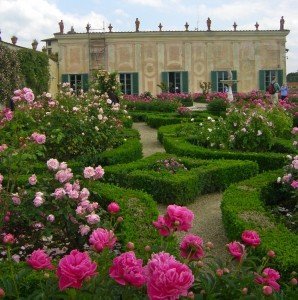 World-famous Boboli Gardens are located near the residence of the Dukes of the Medici Palazzo Pitti, considered a museum of garden sculpture. What is so remarkable about this park?
World-famous Boboli Gardens are located near the residence of the Dukes of the Medici Palazzo Pitti, considered a museum of garden sculpture. What is so remarkable about this park?
- Firstly, it is very beautiful – here there is a huge number of various terraces, fountains, grottos and pavilions.
- Secondly, in the gardens there are sculptures created at different times – from antiquity and ending with the 17th century.
- And finally, the most important argument – Boboli Gardens served as a model by which all European royal parks, including Versailles were made.
You will admire this park also because what it offers wonderful panoramic view of Florence.
The park has its name thanks to the eponymous hill. The idea to create this park belonged to Eleanor of Toledo – the wife of Duke Cosimo I de ‘Medici. She wanted to break not just a beautiful park and do the best to emphasize the wealth and influence of the family. Above the embodiment of the idea the best Italian architects and sculptors have been working since 1549.
A lot of different events were held in the Boboli gardens at all times when the Medici arranged magnificent receptions, performances and celebrations. Today, the park is also common to see musical and theatrical performances, as well as exhibitions. By the way, the park opened for visitors in 1766.
The Boboli gardens has the amphitheater, where the very first operas in the world took place. The amphitheater is also interesting because of an Egyptian obelisk, brought from Luxor.
It is worth noting that you can see the fountain of Neptune there. By the way, almost all the sculptures have their historical value.
Interesting: Near one of the caves there are statues of slaves – replicas of Michelangelo’s “Slaves”. Nearby there is a statue of a fat man sitting astride a turtle – the court jester of the Duke Cosimo I.
Place to visit number 7: Quadrilatero D’Oro, Milan
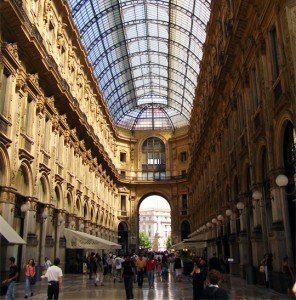 Most of the tourists in Milan choose not pompous La Scala and the majestic Duomo. They come here for the fantastic, exciting, disturbing and alluring shopping! And Milan responds to them in return, opening the doors of the world’s best boutiques, arranging unrealistic sales lasting for a month and brilliant showcases attracting with the best women’s friends – diamonds.
Most of the tourists in Milan choose not pompous La Scala and the majestic Duomo. They come here for the fantastic, exciting, disturbing and alluring shopping! And Milan responds to them in return, opening the doors of the world’s best boutiques, arranging unrealistic sales lasting for a month and brilliant showcases attracting with the best women’s friends – diamonds.
Of course, the largest part of the most inspirational, expensive and fashionable shops is located in the world famous Quadrilatero D’Oro. According to different versions, the quarter unites 4 or 6 streets and it is not much north of the Duomo. In short, even if you decide to go to Milan and not spend much money on clothes, it is very difficult to pass this area by. Do not even try – local shop windows, intricately decorated facades of the showrooms themselves and old streets are considered the same attraction as, for example, the Sforza Castle.
They say that the greatest concentration of women at the windows of: Via della Spiga, where there are jewelry stores:
- “Tiffany”,
- “Bulgaria”,
- “Sharra Pagano.”
Leave this cursed place only with an empty purse, full bags and a happy smile on his tired forehead.
The main street of ‘Quadrilatero’ is Via Montenapoleone, which sheltered the following boutiques:
- Ferragamo,
- Gucci,
- Versace,
- Hermes,
- Dior,
- Burberry,
- Valentino,
- Prada,
- Fendi,
- Armani,
- La Perla,
- Dolce & Gabbana,
- Ferré,
- Laura Biagiotti,
- Miu Miu.
There are a dozen of brands, which are also not so well-known around the world, but familiar to every self-respecting fashionable Italian.
In addition, here you can find not only clothes. In the “Golden Quadrilateral” you can order a pair of designer shoes from Tanino Crisci, look in antique shops on Via Borgospesso, dine in incredibly expensive restaurant for the elite fashion business Bice. And finally to leave this place with an empty purse, full bags and a happy smile.
Interesting: There are a dozen of brands, which are also not so well-known around the world, but familiar to every self-respecting fashionable Italian.
Place to visit number 8: Palazzo di Capodimonte, Naples
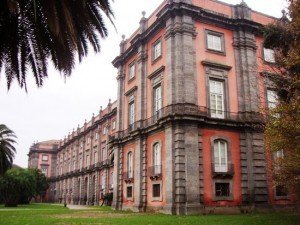 The world-famous art gallery is beautiful both outside and inside (of course, not least due to the unprecedented number of masterpieces of the great masters of painting and sculpture). Located in a building of the grandiose palace built as a summer residence specially for Charles of Bourbon in 1738, the gallery hides another treasure of Naples under its “entrails”. Namely – the ancient catacombs, dating from the 2nd century, in which the body of St. Januarius was buried.
The world-famous art gallery is beautiful both outside and inside (of course, not least due to the unprecedented number of masterpieces of the great masters of painting and sculpture). Located in a building of the grandiose palace built as a summer residence specially for Charles of Bourbon in 1738, the gallery hides another treasure of Naples under its “entrails”. Namely – the ancient catacombs, dating from the 2nd century, in which the body of St. Januarius was buried.
Fans of painting should undoubtedly visit this place. You will see the best works of European artists of the late Middle Ages and the Renaissance. This is the “Crucifixion of Christ” by Masaccio, “Madonna and Child with Two Angels,” Botticelli, “The Transfiguration of Christ” by Bellini, the earliest of the “Dana” by Titian, Raphael and his “Madonna Divina amore” Correggio with “Gypsy” and “The Secret Marriage of St. . Catherine of Alexandria “and the masterpieces of Parmigianino, Caravaggio, Luca Giordano and some non-Italian” producers “- Pieter Bruegel the Elder, El Greco, Goya.
Created under sketches of the famous architect Giovanni Antonio Medrano for Parma of the Dukes of Farnese Palace today there are several collections of famous artists:
- The Farnese collection,
- Borgia family paintings,
- Tapestries of Avalos,
- Porcelain of Maria Amalia of Saxony.
Interesting: The highlight of the gallery is the china cabinet that holds truly rare and unique items of porcelain that is thin as the shell of an egg.
Place to visit number 9: Opera San Carlo Theater, Naples
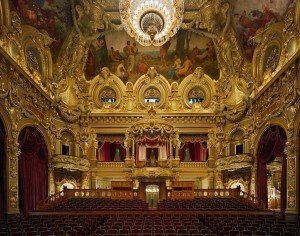 The theater is located in the central Piazza dei Plebiscito and is adjacent to the royal palace. This is one of the oldest opera houses in Europe, which has never stopped working: it opened to the public in 1737 – that is, decades before La Scala. By virtue of size, structure and age the theater became a model for many other buildings in Europe. After becoming king of Naples, Charles VII of Bourbon wanted to build a city in a new and larger Opera House, which would replace the outdated Teatro San Bartolomeo, built in 1621. The new theater was opened on the day of the royal birthday: here the opera Domenico Sarraut “Achilles on Skyros ” took place.
The theater is located in the central Piazza dei Plebiscito and is adjacent to the royal palace. This is one of the oldest opera houses in Europe, which has never stopped working: it opened to the public in 1737 – that is, decades before La Scala. By virtue of size, structure and age the theater became a model for many other buildings in Europe. After becoming king of Naples, Charles VII of Bourbon wanted to build a city in a new and larger Opera House, which would replace the outdated Teatro San Bartolomeo, built in 1621. The new theater was opened on the day of the royal birthday: here the opera Domenico Sarraut “Achilles on Skyros ” took place.
Today the San Carlo Theater attracts many visitors not only as a major opera city area, but also as an architectural landmark with a beautiful interior.Neapolitan opera school enjoyed great success in Europe and the greatest artists of the time performed brilliantly at the Teatro di San Carlo. In particular:
- the famous castrato Giovanni Manzuoli,
- Caffarelli (Gaetano Madzhorano),
- Farinelli (Carlo Throws),
- Gizziello (Dzhioakkino Conti),
- Jean-Battista Vellutti.
The authors of the architectural project were Giovanni Antonio Medrano, an architect, and Angelo Karasale, former director of the theater of San Bartolomeo. The original hall in the shape of a horseshoe is now considered one of the oldest in the world. The main hall in length had more than 28 meters and over 22 meters wide. Here you can see the many boxes, separated by columns, and the abundance of blue and gold – ancestral flowers of the Bourbons. In 1816 the theater was badly damaged by the fire, and as a result of the restoration the size of the room increased and the interior has changed. The following changes in the decor were dated 1844, when the interiors have become more traditional red and gold coloring. Once again, the theater suffered during the bombing in 1943, but immediately after the liberation of Naples it began to recover, and in the end of 1943 was given “La Boheme” by Puccini.
Interesting: The opera season in the theater lasts from January to May and ballet – from April to early June.
Place to visit number 10: Leaning Tower of Pisa, Pisa
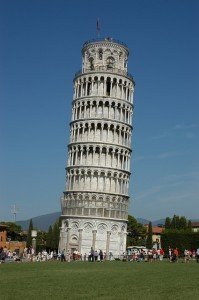 At the dawn of the 12th century in the Italian city of Pisa, the construction of the Cathedral of Our Lady of the Assumption began and it would have been one of the hundreds of others, of course, beautiful, but little-known Italian cathedrals, if not for its world-famous bell tower or how it is commonly called, Leaning tower of Pisa.
At the dawn of the 12th century in the Italian city of Pisa, the construction of the Cathedral of Our Lady of the Assumption began and it would have been one of the hundreds of others, of course, beautiful, but little-known Italian cathedrals, if not for its world-famous bell tower or how it is commonly called, Leaning tower of Pisa.
Everything unusual and extraordinary is here because it is not in vain in the Square of Miracles. Interesting Facts:
- Firstly, it is almost unique in the world of the bell tower, which stands at some distance from the cathedral, although it is likely explained by the project site area.
- Secondly, some experts trace the Muslim motives in its external design, finding some even a vague resemblance to the minaret of the chapel. But, nevertheless, it is not just one of the components of an ensemble of Christian cathedral, but its main decoration.
Interesting: Ultimately, Leaning Tower of Pisa is a seven-storey building, consisting of a base and the belfry itself.
Back